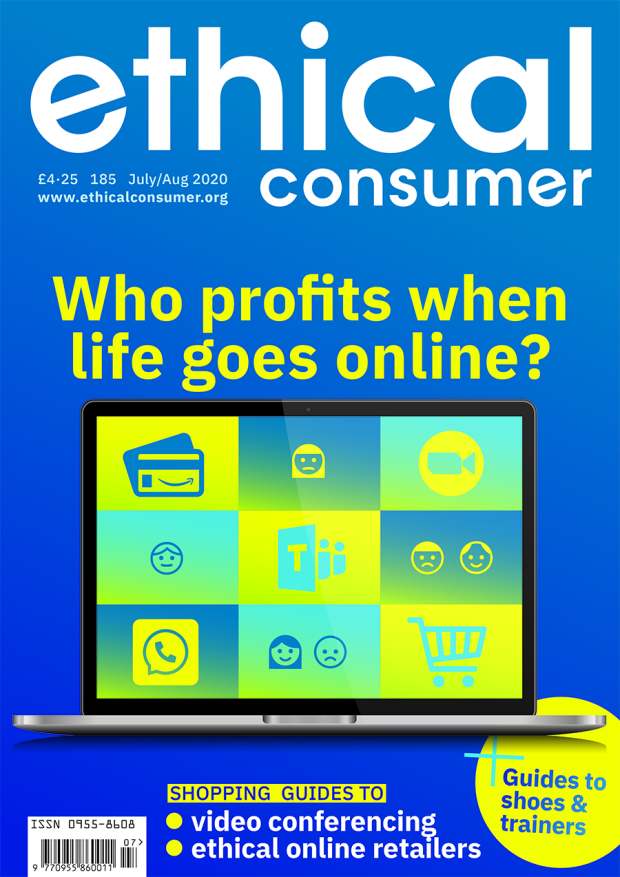How ethical are video conference platforms?
In this guide, we assess the ethical performance of the companies behind twenty-one video conferencing platforms, including the major platforms used in both business and social settings, along with some lesser-known alternatives. We’ll discuss the privacy and surveillance issues endemic in the tech industry and weigh up the environmental costs and benefits of the move to remote meetings.
As well as their ethical practices, the tools in this guide will vary in terms of their ease of use, the features they offer and their performance in different settings. Video calls featuring a large number of users, or where users have slow internet connections, will often be more stable when using the more mainstream options.
We recommend putting any given video conference platform to the test before using it for an important meeting or event.
The growing market for video calls
As Covid-19 swept across the globe and citizens were sent into lockdown, millions turned to technology to stay connected to the rest of the world. And so, while many areas of the economy have suffered, the video conferencing market has exploded.
The biggest winner of all it seems is Zoom. The Silicon Valley-based platform emerged early on as first choice for businesses and consumers alike, and has seen its share price soar from $76 at the end of January to nearly $200 at the start of June, while daily users increased from 10 million in December to 300 million in April.
Zoom’s success has been something of a disruption, as web-based services are generally dominated by a handful of giant companies. Indeed, Google, Facebook and Microsoft have all been playing catch up, releasing new branding, features and pricing for their video call apps as they jostle for position.
Elsewhere, large companies and investors have been scrambling for a piece of the pie. This is reflected in two major acquisitions that have been completed since April: the takeover of video conferencing platform BlueJeans by US telecommunications giant Verizon, and the merger of the Lifesize and Serenova platforms orchestrated by private equity group Marlin Equity Partners.
While the soaring demand may not endure, the long-term trend is likely to be growth, and there are suggestions that the shift towards remote working will continue after the crisis.





